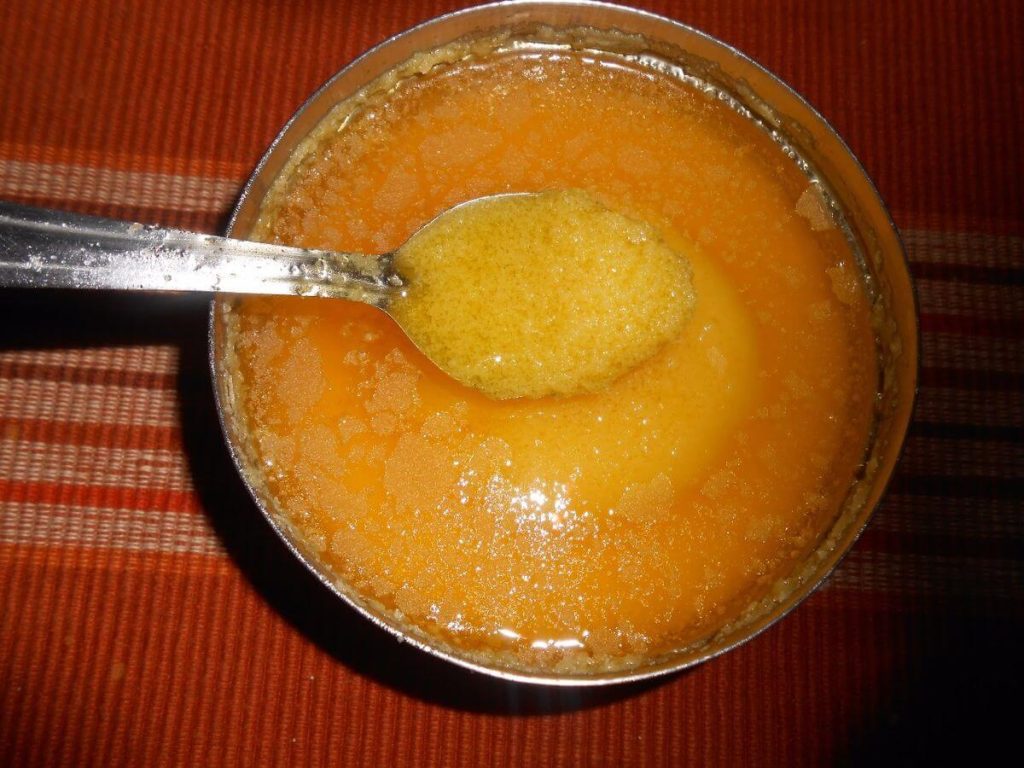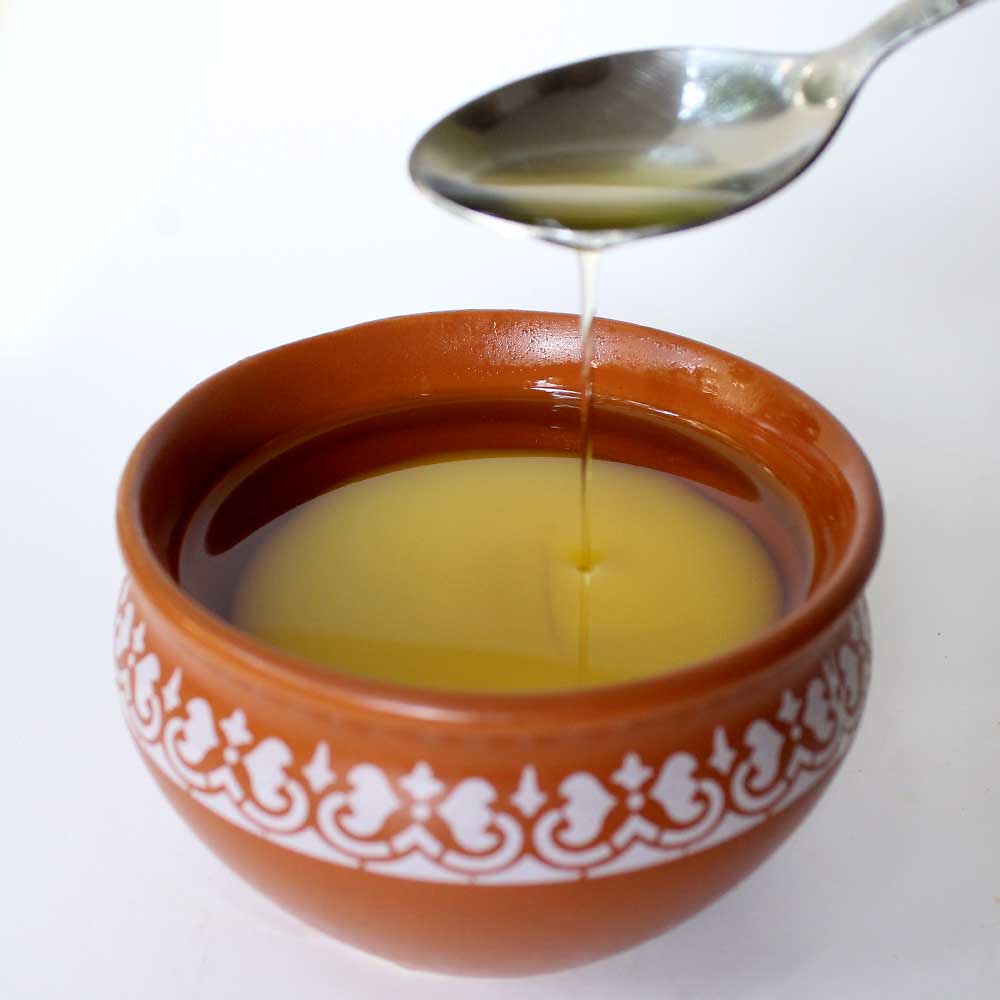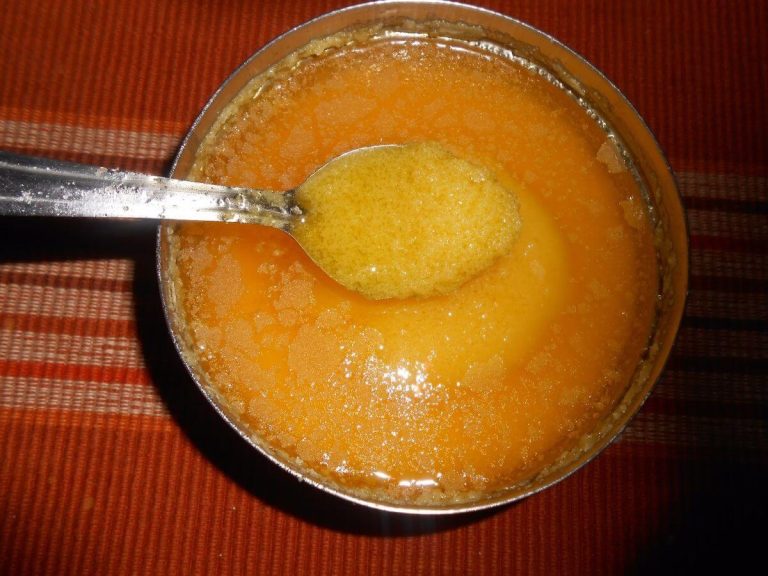Is Ghee Low FODMAP? A Quick Guide
If you’re following a low FODMAP diet, you may be wondering whether ghee is a suitable cooking fat for you. Ghee is a form of clarified butter that is commonly used in Indian cuisine.
When it comes to FODMAPs, ghee is considered low FODMAP in small amounts. According to a study published in the Journal of Gastroenterology and Hepatology, ghee does not contain any detectable levels of lactose or galactose, which are both high FODMAP sugars.
However, ghee does contain trace amounts of other FODMAPs, including fructans and GOS, which can be problematic for some people with IBS. As with any food on the low FODMAP diet, it’s important to monitor your symptoms and portion sizes to determine your personal tolerance level.
Ghee: A Brief Overview
Ghee is a type of clarified butter that has been used in Indian cooking for centuries. It is made by heating butter until the milk solids separate from the fat, which is then strained off. The result is a rich, golden liquid that has a nutty, buttery flavor. One of the benefits of ghee is that it has a high smoke point, which means it can be heated to high temperatures without burning. This makes it an ideal cooking fat for frying and sautéing.
Ghee is also a good source of fat-soluble vitamins like A, D, E, and K. These vitamins are important for maintaining healthy skin, eyes, and bones. Ghee also contains conjugated linoleic acid (CLA), which has been shown to have anti-inflammatory properties.
Is Ghee Low FODMAP?

Ghee is considered low FODMAP in small servings, which is about 1 tablespoon or 13 grams. It contains no carbohydrates, which means it has no measurable FODMAP content. However, if you consume more than the recommended serving size, the FODMAP content can increase and cause digestive issues.
Here is a nutrition table for ghee per serving suggestion:
| Nutrient | Amount per 1 tablespoon (13g) |
|---|---|
| Calories | 112 |
| Total Fat | 13g |
| Saturated Fat | 8g |
| Cholesterol | 33mg |
| Sodium | 0mg |
| Protein | 0g |
| Carbohydrates | 0g |
| Fiber | 0g |
| Sugar | 0g |
It’s important to note that ghee is high in saturated fat, which can contribute to heart disease if consumed in excess. Therefore, it’s recommended to consume ghee in moderation as part of a well-balanced diet.
Here is a table for Glucose, Fructose, and Excess Fructose per serving suggestion:
| Sugar | Amount per 1 tablespoon (13g) |
|---|---|
| Glucose | 0g |
| Fructose | 0g |
| Excess Fructose | 0g |
Also Read: Is Ezekiel Bread Low FODMAP
Benefits of Ghee on a Low FODMAP Diet
Ghee is a great option for those following a low FODMAP diet because it is low in lactose and does not contain any FODMAPs. In fact, ghee is often recommended as a substitute for butter in low FODMAP recipes.
Aside from being low FODMAP, ghee also has several other benefits that make it a great addition to your diet. Here are some of the benefits of ghee on a low FODMAP diet:
High smoke point
Ghee has a high smoke point, which means it can be heated to high temperatures without burning. This makes it a great option for cooking and frying.
Rich in healthy fats
Ghee is rich in healthy fats, including medium-chain triglycerides (MCTs) and butyric acid. MCTs are easily digested and can provide a quick source of energy, while butyric acid has been shown to have anti-inflammatory properties.
Lactose-free
As mentioned earlier, ghee is lactose-free, which makes it a great option for those who are lactose intolerant.
Long shelf life
Ghee has a long shelf life and does not require refrigeration. This makes it a convenient option for those who want to stock up on pantry staples.
Also Read: Is Erythritol Low FODMAP
Potential Risks of Ghee on a Low FODMAP Diet

While ghee is considered a low FODMAP food, there are still some potential risks to keep in mind when incorporating it into your diet. Here are some things to consider:
High in Fat
Ghee is a type of clarified butter that is made by simmering butter and removing the milk solids. While this process removes lactose and casein, it does not remove the fat. In fact, ghee is higher in fat than regular butter, with one tablespoon containing around 14 grams of fat.
If you are on a low FODMAP diet to manage digestive issues, consuming too much fat can lead to discomfort and other symptoms. It’s important to use ghee in moderation and pay attention to portion sizes.
May Contain Traces of Lactose and Casein
While the process of making ghee removes most of the lactose and casein, it is still possible for small traces of these proteins to remain. This means that some people who are highly sensitive to lactose or casein may still experience symptoms when consuming ghee.
If you are lactose or casein intolerant, it’s important to pay attention to your body’s response when consuming ghee and adjust your intake accordingly.
Not Suitable for Those with Dairy Allergies
Ghee is made from butter, which means it is not suitable for those with dairy allergies. While the process of making ghee removes most of the milk proteins that cause allergic reactions, there may still be traces left that could trigger an allergic response.
If you have a dairy allergy, it’s best to avoid ghee altogether and opt for other low FODMAP fats and oils instead.
Overall, ghee can be a great addition to a low FODMAP diet, but it’s important to consume it in moderation and be aware of any potential risks. If you have any concerns or questions, it’s always best to consult with a healthcare professional or registered dietitian.
How to Incorporate Ghee into a Low FODMAP Diet
According to a study, ghee is low FODMAP and can be safely consumed on a low FODMAP diet. However, it is important to use ghee in moderation, as it is high in fat and calories.
Here are some tips on how to incorporate ghee into your low FODMAP diet:
Use ghee as a cooking oil
Ghee has a high smoke point, making it great for cooking at high temperatures. You can use it to sauté vegetables, fry eggs, or cook meats.
Spread ghee on toast
Ghee can be used as a spread on toast or crackers instead of butter or margarine.
Add ghee to rice or quinoa
You can add a spoonful of ghee to cooked rice, roasted corn, or quinoa to add flavor and richness.Use ghee in baking: Ghee can be used as a substitute for butter in baking recipes. It is particularly good in recipes that call for brown butter.
Conclusion – Is Ghee Low FODMAP
In conclusion, ghee is considered to be low FODMAP in small amounts. As per the Monash University Low FODMAP Diet app, ghee is low FODMAP up to 1 tablespoon (19g) per serving. However, it is important to note that ghee is high in fat and calories, so it should be consumed in moderation.
If you have been diagnosed with Irritable Bowel Syndrome (IBS) and are following the low FODMAP diet, you can include ghee in your diet in small amounts. Ghee can be used as a substitute for butter or oil in cooking.
Related: Are Jalapenos Low FODMAP
Frequently Asked Questions
Is ghee a safe option for those with IBS?
Ghee is considered a safe option for those with IBS who are following a low FODMAP diet. FODMAPs are short-chain carbohydrates that are not easily absorbed by the body and can cause digestive discomfort in some individuals. Ghee is a clarified butter that has had the lactose and casein removed, which are two common FODMAPs. Therefore, ghee is considered a low FODMAP food and can be safely consumed by those with IBS who are following a low FODMAP diet.
Is ghee considered an inflammatory food?
Ghee is not considered an inflammatory food. In fact, ghee is often used in Ayurvedic medicine as a healing food due to its anti-inflammatory properties. Ghee is rich in butyrate, a short-chain fatty acid that has been shown to have anti-inflammatory effects on the body. Therefore, ghee can be a beneficial addition to the diet for those with inflammatory conditions.
Are there any low FODMAP alternatives to ghee?
If you are following a low FODMAP diet and cannot consume ghee, there are several low FODMAP alternatives available. These include:
- Coconut oil
- Olive oil
- Rice bran oil
- Sunflower oil
These oils are all low in FODMAPs and can be used in place of ghee in cooking and baking.
Can ghee be substituted for butter on a low FODMAP diet?
Yes, ghee can be substituted for butter on a low FODMAP diet. As mentioned earlier, ghee is a clarified butter that has had the lactose and casein removed, which are two common FODMAPs. Therefore, ghee is considered a low FODMAP food and can be used in place of butter in cooking and baking.
Is ghee a low histamine option for those with sensitivities?
Ghee is considered a low histamine food and can be a good option for those with histamine sensitivities. Histamine is a chemical that is produced by the body and can also be found in certain foods. Some individuals may be sensitive to histamine and experience symptoms such as headaches, hives, and digestive issues when consuming high histamine foods. Ghee is a low histamine food and can be safely consumed by those with histamine sensitivities.

Jane Porter is an architect that like many others, had her life significantly impacted by digestive problems for many year. Trying to find a solution to her digestive problem, she came across the low FODMAP diet, a scientifically-backed approach designed to alleviate symptoms associated with irritable bowel syndrome (IBS) and other digestive disorders.


